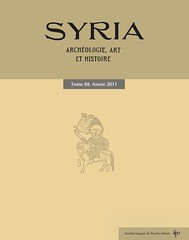Kima Historical Gazetteer: Place Names in the Hebrew Script
The Pelagios Resource Development Grant of the first round has enabled us to launch the project Kima, a Hebrew script, attestation-based historical gazetteer. The resulting resource was a promising database, which was, however, still unbalanced and required more work in order to make it usable as an encompassing, multipurpose gazetteer. We were thrilled, then, to hear that our application for the second round was successful.
The second RDG will enable us not only to consolidate the gazetteer with data entry through OCR and OCR correction of two large print gazetteers, and of the annotation, using Recogito, of the place names in two bilingual editions of medieval travel narratives. Furthermore, more than a rich resource in the Hebrew script, it will enable us to offer a scalable contribution to any gazetteer and extention to Recogito by developing work flows for gazetteer building through Recogito. We will expand here on three aspects of the work: populating the gazetteer, matching and geocoding, and finally, opening and sustaining the gazetteer.
And see AWOL's Roundup of Resources on Ancient Geography


















































